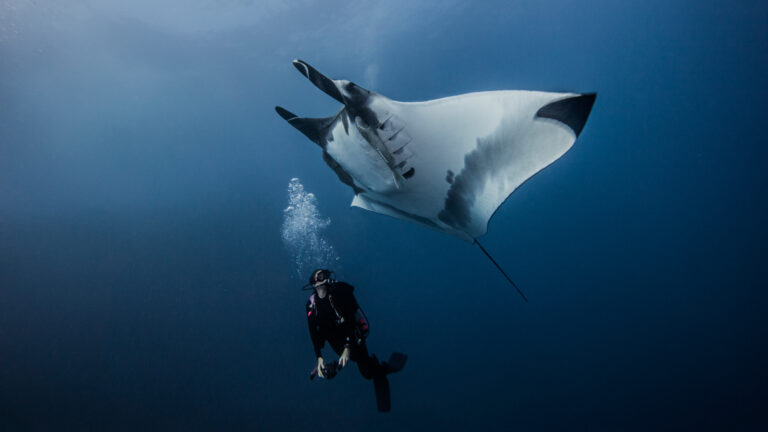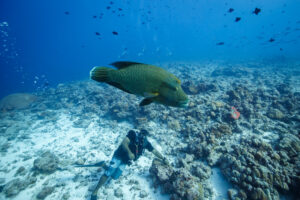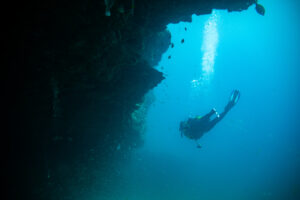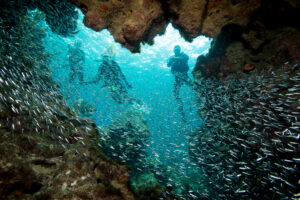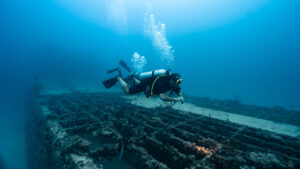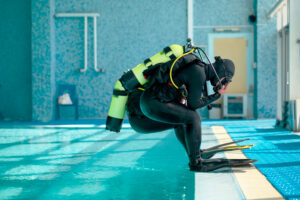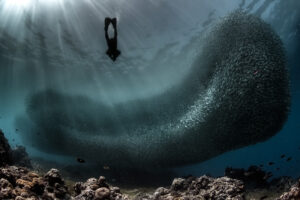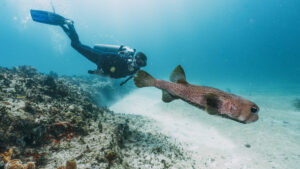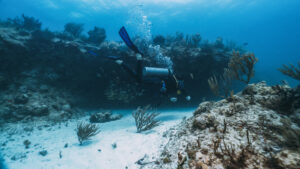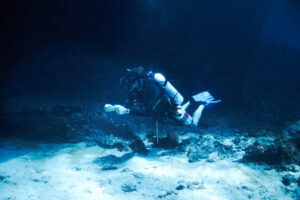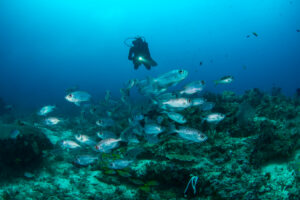What is a Whip?
In the context of scuba diving, a whip refers to a flexible hose or tube used to transfer high-pressure air or other gases from one source to another. Whips are integral to diving operations, facilitating the safe and efficient management of breathing gases. These hoses connect various pieces of diving equipment, such as air tanks, regulators, and buoyancy control devices (BCDs), ensuring divers have a reliable supply of air while underwater. Understanding the role and functionality of whips is crucial for maintaining safety and performance during scuba diving activities.
Historical Background
The term “whip” in diving has its origins in the early development of diving technologies. In the mid-20th century, as scuba diving began to gain popularity, the need for reliable air transfer mechanisms became apparent. Early diving equipment was rudimentary, often repurposed from military or industrial applications. The development of specialized hoses, which came to be known as whips, marked a significant advancement in diving safety and efficiency.
One of the key milestones in the history of whips was the introduction of the demand regulator by Jacques Cousteau and Emile Gagnan in 1943. This invention revolutionized diving by allowing divers to breathe air on demand, rather than from a constant-flow system. The regulator required a reliable hose to connect it to the air tank, leading to the creation of the first whips designed specifically for diving.
Over the decades, improvements in materials and manufacturing techniques have enhanced the durability and performance of whips. The transition from natural rubber to synthetic materials, such as neoprene and polyurethane, provided greater resistance to the harsh underwater environment. These advancements have made modern whips more reliable and safer for divers, contributing to the growth and development of recreational and professional scuba diving.
Technical Description
A whip in scuba diving is a critical component designed to withstand high pressures and harsh conditions. It typically consists of an inner tube made of flexible, durable material surrounded by layers of reinforcing fibers and an outer protective coating. The inner tube is often constructed from materials like neoprene or polyurethane, which are resistant to the corrosive effects of saltwater and the wear and tear of frequent use.
Whips come in various lengths and diameters, tailored to specific applications. For instance, a high-pressure whip used to connect a scuba tank to a regulator must be able to handle pressures up to 3000 psi (207 bar), requiring robust construction and secure fittings. These whips are equipped with special connectors, such as DIN or yoke fittings, to ensure a leak-proof seal.
Different types of whips serve different functions in diving. High-pressure whips, as mentioned, are used to transfer air from the tank to the regulator. Low-pressure whips connect the regulator to other equipment like BCDs or dry suits, facilitating the inflation and deflation processes. Additionally, there are whips designed for specific tasks, such as filling tanks or connecting to surface supply systems in commercial diving operations.
The construction of a whip involves multiple layers of materials. The innermost layer, which carries the gas, is designed to be smooth and flexible to allow easy flow. Surrounding this is a reinforcement layer made from braided or spiraled fibers, providing strength and resistance to kinking. The outermost layer is a protective sheath that shields the whip from abrasion, UV damage, and chemical exposure. This multi-layered construction ensures that whips can endure the demanding conditions of underwater use.
Operational Use
Whips are essential in various diving operations, playing a crucial role in the management and delivery of breathing gases. In recreational scuba diving, a high-pressure whip connects the air tank to the first-stage regulator, which reduces the high pressure of the tank air to an intermediate pressure. From the first-stage regulator, a low-pressure whip connects to the second-stage regulator, which further reduces the pressure to ambient levels, making it breathable for the diver.
In technical diving, where divers use multiple tanks and breathing gas mixtures, whips are used to connect different regulators and tanks. This setup allows divers to switch between gases at different depths, optimizing their breathing mixture for safety and efficiency. The ability to manage multiple gas sources underwater is facilitated by the reliable performance of whips, which ensure that the correct gas reaches the diver at the right time.
Whips also play a vital role in buoyancy control. A low-pressure whip connects the regulator to the BCD, allowing the diver to inflate or deflate the BCD to maintain neutral buoyancy. This connection is crucial for adjusting buoyancy throughout the dive, whether ascending, descending, or hovering at a specific depth.
In professional and commercial diving, whips are used in surface-supplied diving systems, where air or gas is delivered to the diver from the surface through a long hose. These whips must be extremely durable and able to handle the higher pressures and longer distances involved. The integrity of these whips is critical to the safety of the diver, as any failure in the hose could result in a loss of breathing gas.
Safety Considerations
The use of whips in scuba diving involves several safety considerations to ensure the well-being of the diver. One of the primary concerns is the potential for hose failure due to wear and tear or manufacturing defects. Regular inspection and maintenance of whips are essential to identify any signs of damage, such as cracks, kinks, or leaks. Divers should follow manufacturer recommendations for the care and replacement of whips to prevent failures during dives.
Another safety aspect is the proper connection of whips to other diving equipment. Ensuring that fittings are secure and compatible is crucial to preventing gas leaks. Divers should be trained in the correct assembly and disassembly of their equipment, paying close attention to the condition of O-rings and other sealing components. A poorly connected or damaged whip can lead to a rapid loss of air, posing a serious risk to the diver.
Whips should also be protected from environmental hazards that could compromise their integrity. Exposure to sharp objects, chemicals, and extreme temperatures can weaken the materials and lead to failure. Storing whips properly and avoiding unnecessary rough handling can extend their lifespan and reliability.
In addition to physical inspections, functional tests should be performed regularly. This includes checking for leaks under pressure and ensuring that the whips deliver gas smoothly without restrictions. Any issues detected during these tests should be addressed immediately by replacing the whip or making necessary repairs.
Case Studies
Several real-life cases highlight the importance of whips in scuba diving and the potential consequences of their failure. One notable incident involved a diver who experienced a sudden loss of air at depth due to a cracked high-pressure whip. The crack was caused by prolonged exposure to UV light, which had degraded the material over time. Fortunately, the diver was able to switch to an alternate air source and safely ascend, but the incident underscored the need for regular inspection and replacement of aging equipment.
Another case study involved a technical diver using multiple gas mixtures during a deep dive. The diver had meticulously checked all equipment before the dive, including the whips connecting the various tanks and regulators. However, during the dive, one of the low-pressure whips developed a slow leak due to a loose connection. The diver noticed the issue early, thanks to his vigilant monitoring of gas pressures, and was able to tighten the connection underwater, preventing a potentially dangerous situation.
In a commercial diving scenario, a surface-supplied diver experienced a complete loss of air due to a kinked whip. The kink had occurred when the whip became entangled with other equipment on the dive platform. The incident led to a reevaluation of equipment management procedures and the implementation of additional training for handling whips to prevent similar occurrences.
These cases illustrate the critical role that whips play in ensuring the safety and effectiveness of diving operations. They also highlight the importance of regular maintenance, proper handling, and prompt response to any issues that arise during dives.
Recent Developments and Future Trends
Recent advancements in materials science and engineering have led to significant improvements in the design and performance of whips for scuba diving. Innovations such as high-strength synthetic fibers and advanced coatings have enhanced the durability and flexibility of whips, making them more resistant to the harsh underwater environment. These new materials offer greater protection against UV radiation, chemical exposure, and physical abrasion, extending the lifespan of whips and reducing the need for frequent replacements.
Another area of development is the integration of smart technology into whips. Researchers are exploring the use of sensors embedded in whips to monitor their condition in real time. These sensors can detect changes in pressure, temperature, and structural integrity, providing early warnings of potential issues before they become critical. This technology has the potential to revolutionize equipment maintenance by enabling proactive repairs and replacements based on data-driven insights.
The future of whips in scuba diving also includes improvements in environmental sustainability. Manufacturers are increasingly focusing on producing whips with eco-friendly materials and processes. This includes using recyclable materials and reducing the environmental impact of production and disposal. As the diving community becomes more conscious of its ecological footprint, these sustainable practices are likely to become more prevalent.
In addition to these technological advancements, the industry is seeing a trend towards standardization and interoperability of equipment. This means that whips and other components from different manufacturers are becoming more compatible, allowing divers to mix and match gear more effectively. Standardization can also enhance safety by ensuring that all equipment meets rigorous performance and compatibility standards.
Key Takeaways
Whips are an essential component of scuba diving equipment, facilitating the safe and efficient transfer of breathing gases. Understanding their construction, operational use, and safety considerations is vital for all divers. With ongoing advancements in technology and materials, the future of whips promises even greater reliability and performance, contributing to safer and more enjoyable diving experiences.

